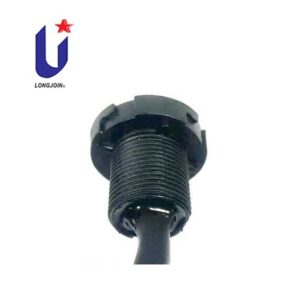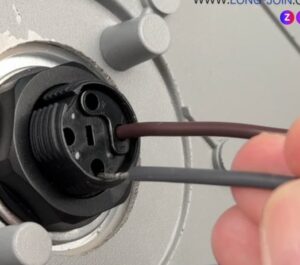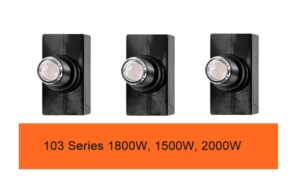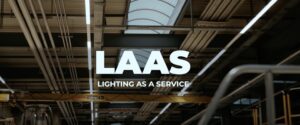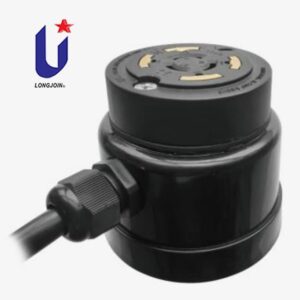Why 73% of U.S. Cities Choose UL-Certified Photocells for Smart Street Lighting
Introduce
Cities are turning into smart cities. The need for street lights that are reliable, efficient, and safe is rising. Seventy-three percent of U.S. cities now use UL-certified photocells. These sensors run their smart street lights. This article looks at why so many people use them. It covers safety and energy savings. It explains how they stay reliable and save money. It shows how they link with other tech. It gives real examples of use. It looks at the rules that back them. And it explores how the market is changing.

How Does UL Certification Keep Street Lights Safe?
UL (Underwriters Laboratories) certification is the safety mark known worldwide. It shows that a product meets strict safety rules. UL certification applies to street light control units. UL 773 is the standard for light-sensitive controls in outdoor fixtures. This certification shows photocell parts can work safely in different tough conditions. They even handle moisture, big temperature swings, and power surges.
Key Safety Features of UL-Certified Photocells:
Feature | Description |
Electrical Safety | Ensures protection against electrical hazards and fire risks. |
Environmental Testing | Validates performance under extreme weather conditions. |
Mechanical Integrity | It checks how tough the photocell housing is. It also tests the strength of its parts. |
UL-certified photocell sensors follow strict safety and durability rules. They help cities trust that their street lights are safe and will last.

How Do UL-Certified Photocells Enhance Energy Efficiency?
Energy efficiency is a cornerstone of smart city initiatives. UL-certified photocell sensors are very important. They let lights adjust based on ambient light levels.These sensors turn lights on at dusk. They turn them off at dawn to save energy.
Energy Savings Achieved:
City | Energy Savings (%) | Implementation Details |
Los Angeles | 63% | Integration of smart photocells with LED streetlights. |
Chicago | 60% | Deployment of networked LED streetlights with photocell controls. |
These energy savings cut operating costs and help the environment. They cut carbon emissions and protect our planet.
Why Do UL-Certified Photocells Work So Well?
Reliability in street lighting is crucial for public safety and urban functionality. UL-certified photocell street lights go through strict tests to make sure they work well over time. They are made to endure harsh outdoor conditions. They handle extreme heat and cold, heavy humidity, and sudden power surges.
Reliability Factors:
Factor | Impact |
Durability | Long lifespan reduces the frequency of replacements and maintenance. |
Consistent Performance | Maintains accurate light sensing capabilities over time. |
Resistance to Interference | Minimizes false switching due to transient environmental changes. |
This reliability keeps the photocell control system working and efficient. It still performs well even in tough conditions.
Is Investing in UL-Certified Photocells Cost-Effective for Cities?
UL-certified photocell switches cost more upfront than non-certified options. Over their lifetime, though, they cut your expenses and pay off big. Street lights use energy more efficiently and need less upkeep. This cuts costs over their lifespan.
Cost-Benefit Analysis:
Cost Component | UL-Certified Photocells | Non-Certified Photocells |
Initial Investment | Higher | Lower |
Energy Consumption | Lower | Higher |
Maintenance Costs | Lower | Higher |
Total Cost Over 10 Years | Lower | Higher |
UL-certified light sensors save money over a long time. They’re a smart choice for towns that want greener cities.

How Do UL-Certified Photocells Integrate with Smart City Technologies?
UL-certified photoelectric sensors are built to work with many smart city systems. This design makes it easy to fit them into both current and future city networks. They work with IoT networks. They also link up with central control platforms and adaptive lighting systems.
Technological Integration Capabilities:
Technology | Integration Benefit |
IoT Networks | Enables remote monitoring and control of street lighting systems. |
Adaptive Lighting | Adjusts lighting levels based on real-time environmental data. |
Centralized Control Platforms | Streamlines management and maintenance operations. |
This integration makes urban lighting more efficient, responsive, and scalable. It helps cities meet smart city goals.
What Real-World Examples Show UL-Certified Photocells In Action?
The real test of any technology lies in its field application. Major U.S. cities now use UL-certified photocells for street light installations. This change brings clear energy savings, lower maintenance costs, and better public safety. These real examples show why many cities choose reliable lighting controls. They invest to keep streets safe and cut costs.
Case Studies:
City | Project Highlights |
Los Angeles | Installed smart streetlights with UL-certified photocells. They cut energy use by 63% and keep people safer. |
Chicago | Switched to networked LED streetlights with UL-certified photocells. This raised reliability and lowered maintenance costs. |
These case studies show how UL-certified photocells help in city lighting. They offer real benefits like safety and reliability.
How Do Laws And Policies Shape The Use Of UL-Certified Photocells?
Government rules and policies shape how we use UL-certified photocells. They guide how fast people start using this technology. Many cities require UL standards for public lighting. This rule also keeps lights safe and reliable.
Regulatory Influences:
Regulation Type | Impact on Photocell Adoption |
Building Codes | Require UL certification for electrical components in public infrastructure. |
Energy Efficiency Standards | Encourage the use of energy-saving technologies like UL-certified photocells. |
Public Safety Regulations | Mandate reliable and safe lighting solutions for urban areas. |
When we follow these regulations, we stay within the law. We also earn the public’s trust in our city’s infrastructure.

What Are The Current Trends In Smart Street Lighting And Photocells?
The smart street lighting market is growing. Cities grow more, technology improves, and people want clean air. UL-certified photocell sensors now lead this trend in smart lighting. They offer simple ways to meet the changing needs of modern cities. SkyQuest’s report says the global smart street lighting market will keep growing steadily. Governments are focusing on more sustainable infrastructure.
Market Trends:
Trend | Description |
Increased Adoption | Growing number of cities implementing smart lighting solutions. |
Technological Innovation | Development of advanced photocell technologies with enhanced features. |
Sustainability Focus | We focus on cutting carbon footprints with energy-efficient lighting. It saves energy and protects our planet. |
These trends show a bright future for UL-certified photocells. They will power the global smart street lighting market.
Conclusion
Seventy-three percent of U.S. cities now choose UL-certified photocells. They rely on them for their safety, energy efficiency, reliability, cost savings, and easy use with smart city systems. Helpful policies and real-world results make their adoption stronger. This change makes them a key part in the growth of modern smart urban systems.
External Links:
●https://www.skyquestt.com/report/smart-street-lighting-market
●https://betterbuildingssolutioncenter.energy.gov/sites/default/files/tools/Chicago_Smart_Lighting_Project_MEEA.pdf
●https://www.signify.com/en-us/brighten-america/transportation/lacasestudy
●https://www.shopulstandards.com/ProductDetail.aspx?UniqueKey=30842
●https://en.wikipedia.org/wiki/UL_(safety_organization)


